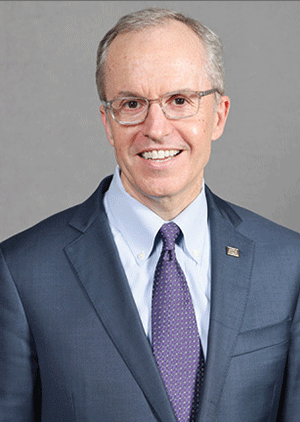My Turn: RSNA Building Human Connections
Supportive tools will make radiologists more efficient, create opportunities for greater communication and reduce burnout

Because technology can get in the way of human connection, we often think of “high tech” as the opposite of “high touch.” Experienced radiologists will remember a time when the radiology department was the nerve center of the hospital. Our clinical colleagues stopped by to discuss the latest imaging results with radiologists. Then new technology made images available everywhere, obviating the need for our colleagues to visit and isolating us in the radiology department. Likewise, electronic health records have had mixed effects—making medical records widely available, but also adding administrative burden to health care providers and leaving less time to connect with our patients and our colleagues.
I believe the next phase of innovation will be different, with new technologies creating opportunities for us to reconnect with fellow radiologists, clinicians and patients. For example, AI can now draft reports automatically, much as human radiology trainees preview images and create draft reports.
These supportive tools will make us more efficient and create time for activities that reduce burnout. Likewise, ChatGPT and other large language models can explain complex medical terms to patients at the reading level and in the language that they prefer—an opportunity for patient engagement with the radiology report and, in turn, with the radiologist who wrote it.
Some AI algorithms help us find subtle abnormalities—the proverbial “needle in a haystack”—accomplishing detection and measurement tasks that are tedious or unsuitable for the human visual perception system, enabling radiologists to focus on more rewarding tasks. As AI matures, this latest wave of technology will strengthen our human connections rather than degrade them, creating a world where people and technology work together to improve patient care and reduce physician burden.
RSNA remains focused on creating these connections by promoting excellence in patient care through research, education and technological innovation. For example, the Imaging AI Certificate program helps build a healthy connection between human radiologists and the novel technologies we use. And our annual meeting brings us together to strengthen our human connections.
I hope you experienced the exuberance of this year’s meeting, with attendees reconnecting with colleagues as pandemic memories fade. With more than 40,000 registered for the meeting, 700 companies exhibiting and over 400,000 square feet of tradeshow space, RSNA remains the largest meeting of medical professionals in the world, as measured both by the number of attendees and by the number of companies exhibiting.
My term as RSNA president is the culmination of decades of volunteering. I am incredibly grateful for the opportunity to serve RSNA over many years. Volunteering for the organization often feels like driving a high-performance automobile. Touch the steering wheel lightly here, tap on the accelerator there, and the amazing RSNA staff and volunteers serve as the engine that multiplies our efforts for the betterment of the profession. I hope you will consider working with RSNA or another organization of your choosing, not only because of what we will accomplish together, but also because of the connections we will create with each other.